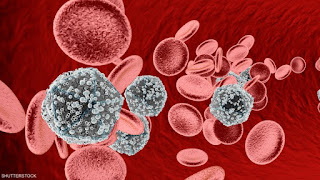New HIV Sub-type L Strain Discovered, But Don’t Panic ARVs Suppress It Too, Reassure Doctors.
Scientists Have Discovered the First New Strain of HIV in 19 Years
Working with the Grassroots and ensuring effective treatment and prevention requires so many skills. These include being updated on HIV-related information. Currently, there are over 36.7 million people living with HIV world wide.
There is an evolution of new strains of HIV. But the one that has been identified by scientists at Abbott Laboratories is the Sub-type L
Strain, but don’t panic ARVs suppress it too. Doctors reassure all of us,
reports Nico Long in Plus.
"For the first time in nearly two decades, a team of scientists have discovered
a new strain of HIV. However, experts say there is no cause for alarm.
According to a report published Wednesday in the Journal of
Acquired Immune Deficiency Syndromes, researchers with Abbott Laboratories
and the University of Missouri, Kansas City discovered a new strain of the
human immunodeficiency virus related to the Group M version of HIV-1. There are
two types of the virus: HIV-1 and HIV-2, the latter of which is relatively
rare. Of the four strains of HIV-1 — Groups M, N, O, and P — the former is
responsible for the vast majority of HIV cases worldwide.
In order to be classified as a new subtype of HIV, scientists have to
identify three independent cases. Researchers told CNN they have done so: two
samples were discovered in the Democratic Republic of Congo 1983 and 1990,
while a third was located in the African nation in 2001.
Mary Rodgers, a coauthor of the study, told the network that identifying
the strain as an entirely new subtype of the virus proved a “real challenge for
diagnostic tests,” which is why its existence is only coming to light now.
“The sample was small, and while it seemed similar to the two older
samples, scientists wanted to test the whole genome to be
sure,” CNN reports. “At the time, there wasn't technology to
determine if this was [a] new subtype. So scientists at Abbott and the
University of Missouri developed new techniques to study and map the 2001
sample.”
Rodgers says the nearly decades-long process of verifying the strain’s
existence was akin to “searching for a needle in a haystack” and then removing
the needle “with a magnet” afterward.
The strain is now known as subtype L, the 10th strain of Group M.
Different subtypes can also combine to form a “circulating recombinant form,”
also known as a CRF. According to the international HIV/AIDS nonprofit Avert,
there are currently 89 known CRFs but could be more in the future as the virus
continues to evolve over time.
HIV/AIDS experts caution the public not to overreact to news of the
existence of subtype L, especially given how few identified cases there
have been.
“There's no reason to panic or even to worry about it a little bit,”
Anthony Fauci, the director of the National Institute of Allergy and Infectious
Diseases, told CNN. “Not a lot of people are infected with this. This is
an outlier.”
Not much is known about how subtype L might affect individuals
differently than other strains. However, scientists are confident that with
enormous advances in medical technology since the New York
Times reported on a “rare cancer seen in 41 homosexuals” in July 1981,
they will be able to effectively test for and treat the recently verified
subtype.
“This discovery reminds us that to end the HIV pandemic, we must
continue to out think this continuously changing virus and use the latest
advancements in technology and resources to monitor its evolution,” study
co-author Dr. Carole McArthur told CNN.
According to estimates, 37.9 million people across the world are currently living with HIV, while 1.7
million individuals contracted the virus last year. HIV can be effectively
monitored by taking daily medication, which reduces the presence of the virus
in the bloodstream. Meanwhile, taking pre-exposure prophylaxis (PrEP)
drugs minimizes the risk of contracting HIV through intercourse by 90
percent."



Comments
Post a Comment